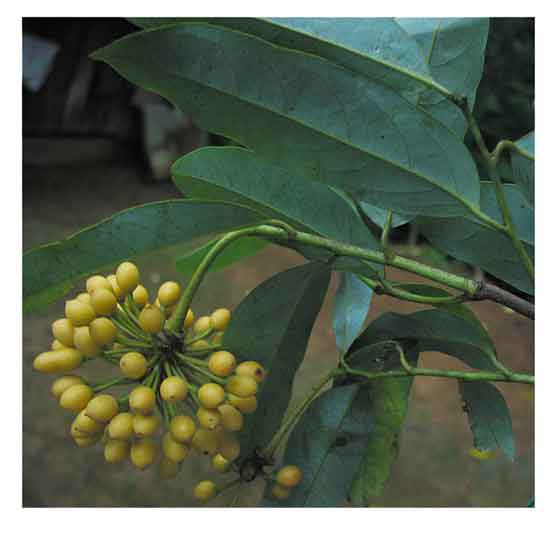
Family • Annonaceae
Malaatis
Dasymaschalon clusiflorum (Merrr.) Merr.
| Scientific names | Common names |
| Dasymaschalon clusiflorum (Merr.) Merr. | Buyanus (C. Bis.) |
| Dasymaschalon clusiflorum var. oblongatum (Merr.) Ban | Kalabuyo (Tag.) |
| Dasymaschalon oblongatum Merr. | Kalimatas (Tagb.) |
| Polyalthia clusiflora (Merr.) C.B.Rob. | Lanutan (Tag.) |
| Unona clusiflora Merr. | Lanutan-puti (Tag.) |
| Malaatis (Tag.) | |
| Malamarobo (S. L. Bis.) | |
| Malasagiat (Ilk.) | |
| Panagit (C. Bis.) | |
| Sagapan (Bag.) | |
| Sagot (Ilk.) | |
| Tabog (Sur.) | |
| Lanutan is a common name shared by: (1) Kalai, Alphonsea arborea (2) Malaatis, Dasymaschalon clusiflorum (3) Kalimatas, Phaenthus ebracteolatus, and (4) Duhat-matsing, Polyalthia suberosa. | |
| Dasymaschalon clusiflorum (Merr.) Merr. is an accepted species. KEW: Plants of the World Online | |
Updated September 2023 / April 2018 / April 2016
![]()
 |
PHOTOS / ILLUSTRATIONS |
| IMAGE SOURCE: Photo / Dasymaschalon clusiflorum / Fruiting twig / Copyright © 2011 / Leonardo L Co / [ref. DOL27044] / Non-commercial use / Image modified / Click on image or link to go to source page / Phytoimages.siu.edu |
| Additional
Sources and Suggested Readings (1) Dasymaschalon clusiflorum (Merr.) Merr. / Synonyms / KEW: Plants of the World Online (2) Ethnomedicinal Plants Used by Residents in Northern Surigao del Sur, Philippines / Gemma A Gruyal*, Romeo del Roasario, and Nenita D Palmes / Natural Products Chemistry & Research, 2014; 2 (4) (3) Dasymaschalon clusiflorum / KEW: Plants of the World Online (4) Dasymaschalon (PROSEA) / RE Nasution / Pl@ntUse |
• |
DOI: It is not uncommon for links on studies/sources to change. Copying and pasting the information on the search window or using the DOI (if available) will often redirect to the new link page. (Citing and Using a (DOI) Digital Object Identifier) |
| List of Understudied Philippine Medicinal Plants |
• |
 |
• |


